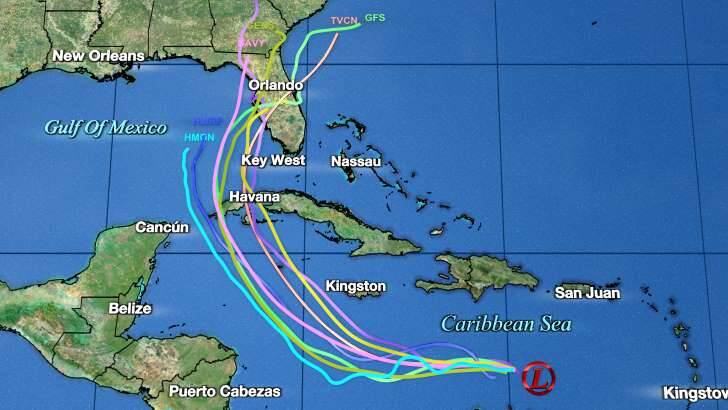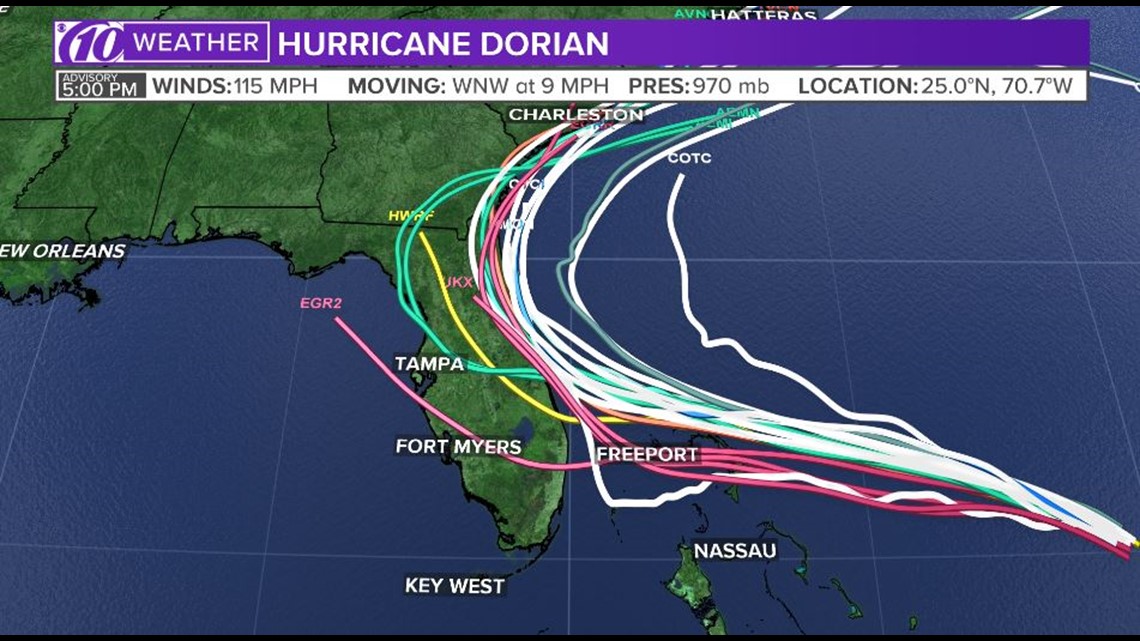Spaghetti Model Overview

Spaghetti models, also known as spaghetti plots or ensemble forecasts, are a type of statistical model used to represent the uncertainty in a prediction. They are created by running a computer model multiple times with slightly different inputs, and then plotting the results on a graph. The resulting spaghetti-like lines show the range of possible outcomes, giving a visual representation of the uncertainty in the prediction.
Spaghetti models, with their colorful strands, attempt to depict the possible paths of a hurricane. By studying these models, meteorologists can gain insights into the path of hurricane beryl , helping to predict its future trajectory. However, it’s important to remember that these models are only projections, and the actual path of a hurricane can deviate significantly from their predictions.
Spaghetti models are used in a variety of fields, including weather forecasting, climate modeling, and financial forecasting. In weather forecasting, spaghetti models can be used to predict the path of a hurricane or the likelihood of rain. In climate modeling, spaghetti models can be used to predict the effects of climate change on temperature, sea level, and other variables. In financial forecasting, spaghetti models can be used to predict the price of a stock or the likelihood of a recession.
Spaghetti models, ensembles of hurricane track forecasts, provide a range of possible paths a storm may take. To stay informed about the latest track forecasts for Hurricane Beryl, check out where is hurricane beryl headed. This resource offers up-to-date information on the storm’s projected path and intensity, helping you stay prepared.
Benefits of Using Spaghetti Models
- Spaghetti models provide a visual representation of uncertainty, which can be helpful for decision-making.
- Spaghetti models can be used to identify the most likely outcome, as well as the range of possible outcomes.
- Spaghetti models can be used to compare different models or scenarios.
Limitations of Using Spaghetti Models
- Spaghetti models can be computationally expensive to run.
- Spaghetti models can be difficult to interpret, especially for non-experts.
- Spaghetti models can be sensitive to the choice of inputs, and the results can vary depending on the model used.
Spaghetti Model Applications

Spaghetti models find applications in diverse industries and domains, offering valuable insights and aiding in decision-making. They are particularly useful in situations involving complex systems, uncertainty, and multiple variables.
One prominent application of spaghetti models is in the financial sector. Investment firms and banks employ these models to forecast market trends, assess risk, and make informed investment decisions. By simulating various scenarios and analyzing the potential outcomes, spaghetti models help mitigate uncertainty and improve portfolio performance.
Case Study: Spaghetti Model in Finance
In 2018, a leading investment bank used a spaghetti model to forecast the impact of interest rate changes on its bond portfolio. The model simulated thousands of scenarios, considering different interest rate trajectories and their potential effects on bond prices. The results provided valuable insights into the risk-reward trade-offs, enabling the bank to make informed decisions and adjust its investment strategy accordingly.
Spaghetti Model Creation and Analysis: Spaghetti Models

Spaghetti models are ensemble models that generate multiple forecasts to provide a range of potential outcomes. The process of creating a spaghetti model involves the following steps:
Data Selection
The first step in creating a spaghetti model is to select the appropriate data. The data should be relevant to the forecast being made and should include a sufficient number of observations to ensure the robustness of the model.
Variable Selection
Once the data has been selected, the next step is to choose the variables that will be used in the model. The variables should be relevant to the forecast being made and should be able to capture the key drivers of the forecast.
Model Creation, Spaghetti models
Once the data and variables have been selected, the next step is to create the spaghetti model. This can be done using a variety of statistical techniques, such as linear regression, time series analysis, or machine learning.
Analysis and Interpretation
Once the spaghetti model has been created, the next step is to analyze and interpret the results. This involves examining the distribution of the forecasts and identifying the key factors that are driving the forecasts.
Techniques for Analyzing and Interpreting Spaghetti Models
There are a number of techniques that can be used to analyze and interpret spaghetti models. These techniques include:
- Ensemble statistics: Ensemble statistics can be used to summarize the distribution of the forecasts. These statistics include the mean, median, and standard deviation of the forecasts.
- Sensitivity analysis: Sensitivity analysis can be used to identify the key factors that are driving the forecasts. This can be done by changing the values of the input variables and observing the impact on the forecasts.
- Scenario analysis: Scenario analysis can be used to explore different possible outcomes. This can be done by creating multiple spaghetti models with different assumptions about the future.